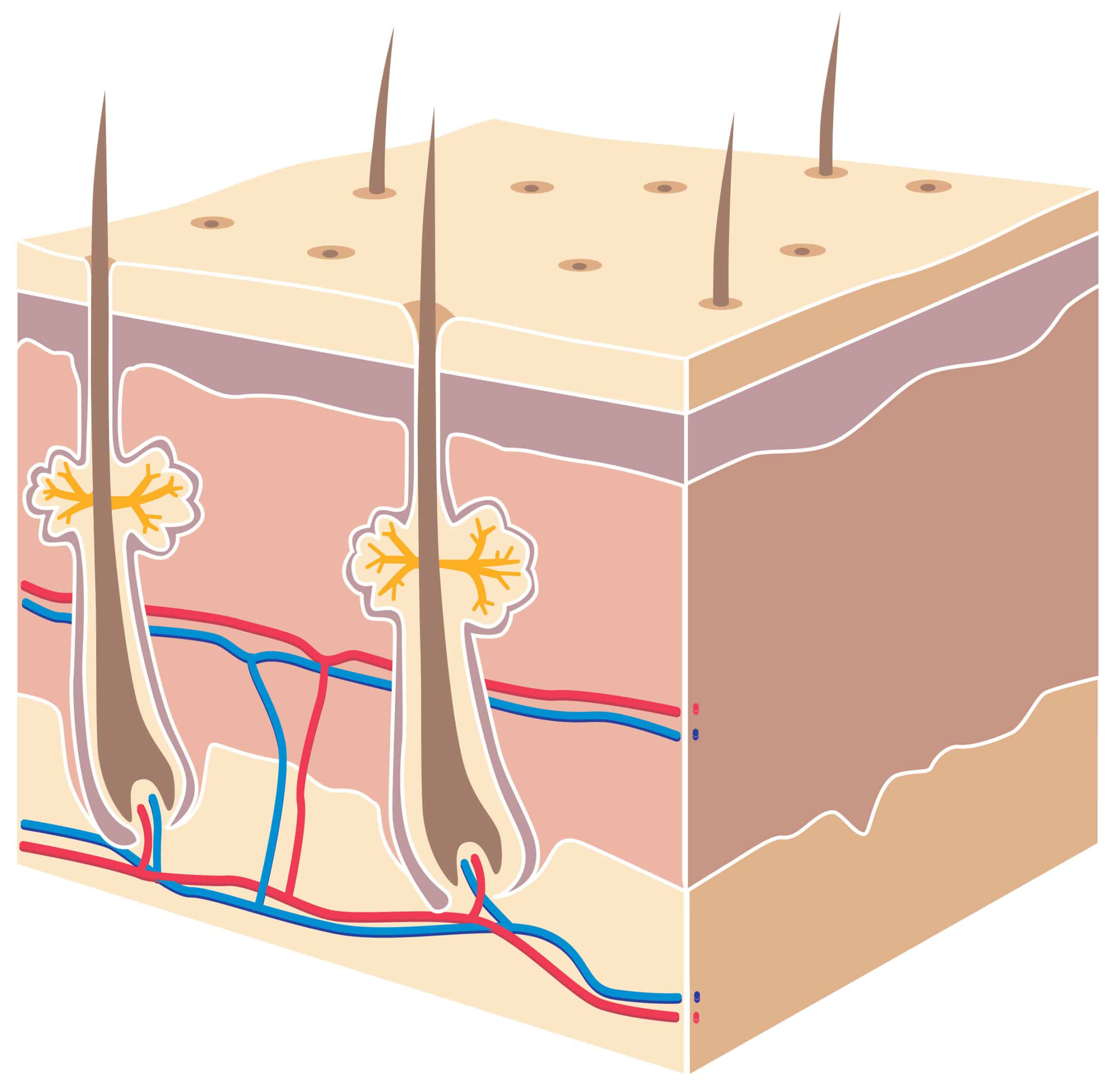FUE Hair Transplant Procedure and Cost
 Follicular unit extraction (FUE), is a surgical method of obtaining hair follicles, naturally occurring groups of one to four hairs, for hair transplantation. Follicular Unit Extraction is an outdated term and has been redefined to Follicular Unit Excision. This name change came about to accurately describe the procedure which involves surgically cutting or incising a full thickness hair follicle skin graft with a circular scalpel, punch or motorized drill and then carefully extracting it from the scalp to be placed in bald or thinning areas on the top of the scalp. Dr. Katona and his team have developed advanced instrumentation to more precisely excise these very small grafts – typically .7 to 1mm in diameter depending of hair type.
Follicular unit extraction (FUE), is a surgical method of obtaining hair follicles, naturally occurring groups of one to four hairs, for hair transplantation. Follicular Unit Extraction is an outdated term and has been redefined to Follicular Unit Excision. This name change came about to accurately describe the procedure which involves surgically cutting or incising a full thickness hair follicle skin graft with a circular scalpel, punch or motorized drill and then carefully extracting it from the scalp to be placed in bald or thinning areas on the top of the scalp. Dr. Katona and his team have developed advanced instrumentation to more precisely excise these very small grafts – typically .7 to 1mm in diameter depending of hair type.
FUE hair transplant takes considerable time and expense to learn and to develop skills to a high standard. Dr. Katona has undergone extensive training and has performed successful hair restoration surgery for over 20 years on well over 10,000 happy patients.
According to Healthline.com an FUE hair transplant can cost between $4,000 and $15,000 per session. A multiple-session procedure may cost up to $50,000 or more.
The ultimate cost of a FUE hair transplant depends on:
- how much hair is extracted and transplanted
- how many surgeons are available in your area to do this procedure
- how frequently your surgeon can perform FUE hair transplants
- how experienced or in-demand your surgeon is
 The first part of the procedure involves making an incision with a circular cutting punch around the hair follicle through the epidermis into the subcutaneous tissue in order to release the follicle from the underlying tissue. The follicular unit is a full thickness skin graft containing epidermis, dermis and fat. The graft is then subsequently extracted with precise forceps and carefully preserved until it is time to re-implant into the recipient area. Each follicular unit is excised one at a time being very careful not to cut the underlying hair matrix cells and injure or fracture the graft with transection. It is critical that the surgeon follows the exact angle the hair follicle exits the scalp so that the follicular organ below the scalp is not transected. Additional care must also be taken when extracting the grafts with forceps to insure the hair follicles are not crushed or manipulated too aggressively which could also affect the growth. FUE requires careful attention to detail and time. Therefore, many physicians are not able to excise as many grafts in one day compared to traditional FUT due to the time involved. Dr. Katona and his staff can excise over 4,000 grafts and implant them in one procedure with the appropriate patient.
The first part of the procedure involves making an incision with a circular cutting punch around the hair follicle through the epidermis into the subcutaneous tissue in order to release the follicle from the underlying tissue. The follicular unit is a full thickness skin graft containing epidermis, dermis and fat. The graft is then subsequently extracted with precise forceps and carefully preserved until it is time to re-implant into the recipient area. Each follicular unit is excised one at a time being very careful not to cut the underlying hair matrix cells and injure or fracture the graft with transection. It is critical that the surgeon follows the exact angle the hair follicle exits the scalp so that the follicular organ below the scalp is not transected. Additional care must also be taken when extracting the grafts with forceps to insure the hair follicles are not crushed or manipulated too aggressively which could also affect the growth. FUE requires careful attention to detail and time. Therefore, many physicians are not able to excise as many grafts in one day compared to traditional FUT due to the time involved. Dr. Katona and his staff can excise over 4,000 grafts and implant them in one procedure with the appropriate patient.
The survival of the hair upon cutting around the hair follicle and then extracting from the scalp is one of the key variables of successful hair transplantation. If follicular units are transected in the incision process, they will not survive the transplant, and the hair transplant will fail.
FUE generally has a quicker patient recovery time and significantly lower post-operative discomfort than follicular unit transplantation (FUT) since there is no large incision and sutures. Additionally the risk of long term nerve damage, leading to chronic numbness and/or pain in the donor area, is significantly reduced with FUE vs the strip (FUT) procedure. Additionally, FUE provides an alternative to FUT when the scalp is too tight for a strip excision and enables a hair transplant surgeon to harvest finer hair from the nape of the neck to be used at the hairline or for eyebrows.




